The Microsoft Surface Pro 6 Review: More Than A Color
by Brett Howse on October 16, 2018 3:01 AM EST- Posted in
- Laptops
- Microsoft
- Surface
- Tablets
- Surface Pro
- Surface Pro 6
Design
Surface Pro has become an iconic design now, and perhaps it shouldn’t be too surprising to see more of an evolution in a new launch than the revolution we sometimes hope for. As the saying goes, if it’s not broke, don’t fix it, and there’s a lot that’s not broken on the Surface Pro design. Ever since moving to the 3:2 aspect ratio back with the Surface Pro 3, Microsoft has seen the other manufacturers imitate their design, with varying levels of success.
Surface Pro 6 keeps the unibody magnesium design relatively unchanged from the 2017 model, with the same rounded edges, and exactly the same exterior dimensions. Weight is almost identical as well, with the Core i5 model coming in at 770 grams, and the Core i7 slightly heavier at 784 grams to account for the fan.
Really, the big change on the design front is the new black color, which as you’d expect on an all-metal device like the Surface Pro, is an anodized finish. The new color option does look striking, especially with the Microsoft logo as a contrasting reflective finish. Microsoft will still be offering the platinum color they’ve been using since the Surface Pro 3. There’s got to be a concern that the black finish won’t be as durable, and any scratches will be immediately apparently, whereas with the platinum finish, scratches would be masked by the color of the metal underneath, but that how durable the finish is will require a longer evaluation.
Surface Pro keeps the same bezel sizes, and with the move to thinner and thinner display bezels, it does look a bit out of place compared to something like the Huawei MateBook X Pro, but since the Surface Pro can also be a tablet, it makes sense to keep some bezel in place as somewhere to hold the device when necessary.
Microsoft has been outfitting Surface with a fast and reliable Windows Hello camera since the Surface Pro 4 launched, and the latest model continues this. The sign-in process is simple, fast, and secure, and it’s hard to say if it’s better than the previous model since both work so quickly.
Being so small and light, Surface Pro is incredibly easy to travel with. The full-friction hinge mechanism lets you use the tablet in an infinite number of positions as well. If you are someone that often types in their lap while traveling though, convertible tablets are generally not as user-friendly as laptops, although it can be awkwardly done if needed.
Accessories
Along with things that have not changed with this launch is the lineup of accessories for the Surface Pro. Every Surface Pro practically requires a keyboard, and Microsoft offers several to suit the customer’s preferences.
The standard Type Cover costs $129.99, and comes in black. If you want a more premium experience, Microsoft also sells the Surface Pro Signature Type Cover which features an alcantara cover, and this model comes in platinum, cobalt blue, burgundy, and black for $159.99. At one point these prices seemed extravagant for a keyboard accessory however Microsoft seems conservative in regards to pricing compared to Apple and Google.
The typing experience on the Type Covers is solid, with good key feel, and the keys stretch to the edges of the cover. The glass trackpad is also excellent. The covers haven’t changed much since they were introduced with the Surface Pro 4, and for good reason.
Microsoft also offers a Surface Pen option, and although the pen was once included in the purchase price, it’s now a separate accessory, but that does give the option of different color pens. The pen was improved dramatically with the previous 2017 Surface Pro, offering more pressure sensitivity, as well as tilt support, and has kept the Surface tradition of replaceable tips as well. So for 2018, this accessory is also unchanged, but with the improvements last year, the inking experience on Surface Pro is already excellent.
Microsoft also offers a docking solution, which hooks up to the SurfaceConnect charging port, and provides two DisplayPort as well as Gigabit Ethernet, four USB 3.0 ports, and audio output. The downside to this dock is that the two DisplayPorts are fed from the same channel, so you are limited to a single UHD output at 60 Hz, and if you try to connect two UHD displays you’ll end up stuck at a 30 Hz refresh rate.
Ironically, Microsoft also sells a SurfaceConnect to USB-C adapter. This seems to be their solution to people who would like USB-C, especially for docking, but it has the same limitations as the Surface Dock being only able to feed a single UHD display at 60 Hz. It is possible to connect a second display to the DisplayPort output on the Pro 6 itself, but that does get a bit messy as far as cabling is concerned. What would be preferable is to offer the USB-C right on the Pro 6 rather than sell a dongle.


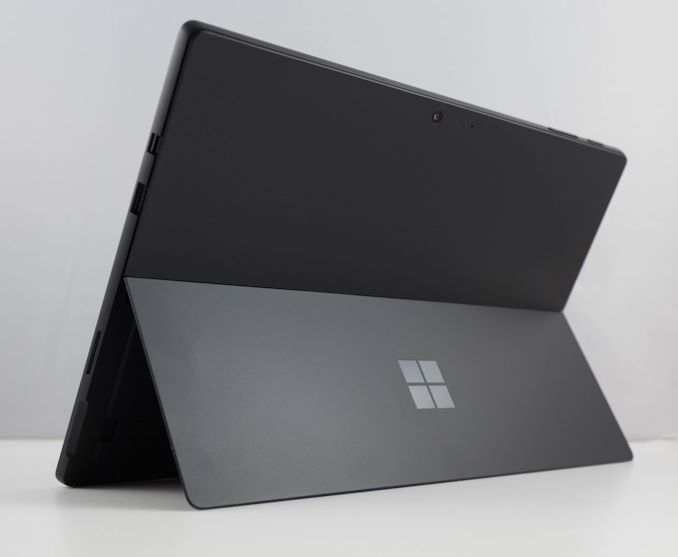
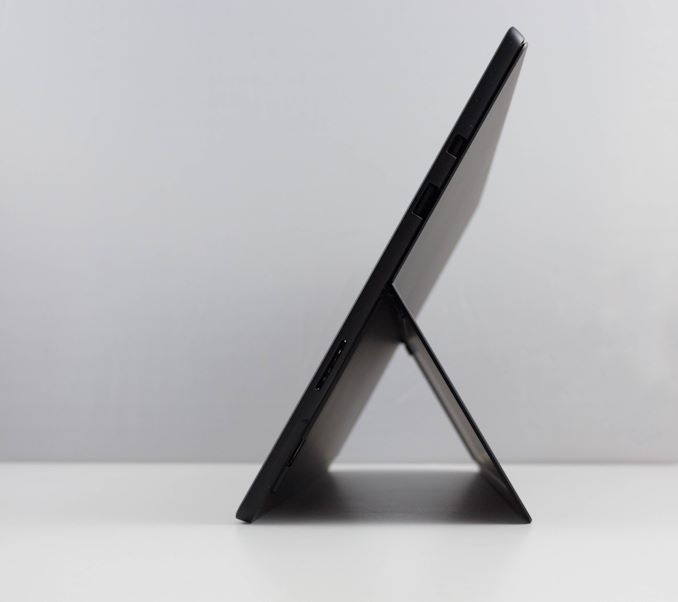
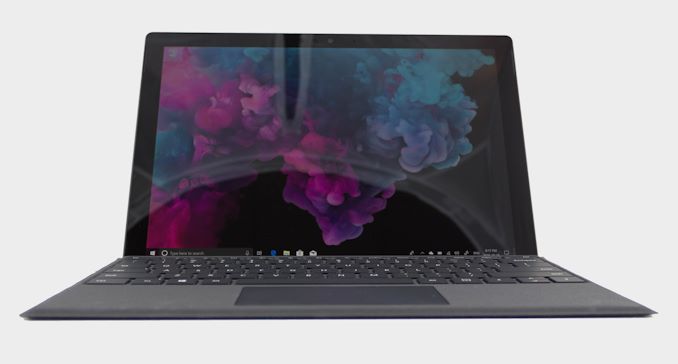
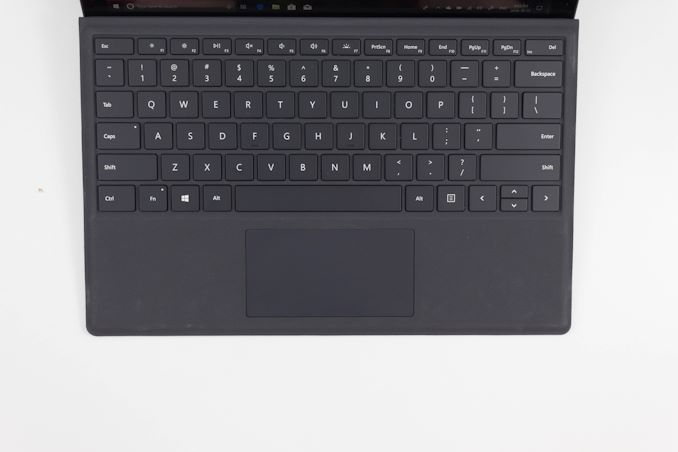
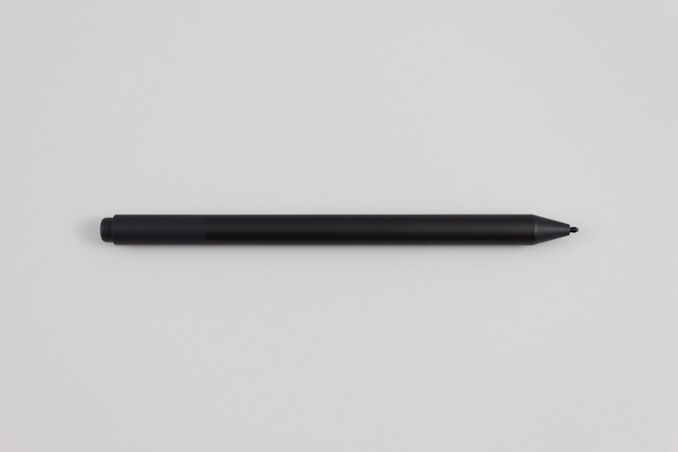








80 Comments
View All Comments
Brett Howse - Tuesday, October 16, 2018 - link
Cinebench isn't long enough for sustained workload testing, but we run it 8 times and throw out the first number. x264 is a much longer test.krutou - Tuesday, October 16, 2018 - link
I think the idea is to chart multiple Cinebench runs like they do on notebookcheck.The first result demonstrates the capability of the chip, at the thermal settings specified by the laptop vendor. Some vendors specify an extremely high max TDP for short turbo.
Subsequent results show how much performance degradation is attributed to good/bad thermals, as well as the vendor specified sustained TDP.
eddman - Tuesday, October 16, 2018 - link
You can run it back-to-back in a loop. Notebookcheck does 50 runs, although you can do less since the lowest sustained number usually becomes clear by the 10-11th run.You run it 8 times in a loop or with pauses?
eddman - Saturday, November 10, 2018 - link
Just as I expected. While i7 model's performance drops by ~11%, the i5 drops by ~25%. That's quite significant.https://www.notebookcheck.net/Microsoft-Surface-Pr...
The omission of the fan was a bad move.
darkich - Tuesday, October 16, 2018 - link
I don't understand..what supposed performance bump?If anything, the performance is a total fiasco judging by those web tests!
damianrobertjones - Tuesday, October 16, 2018 - link
It look close but anything multi-threaded will adore the new quad Cpu. Single threaded will be down to cache.i5-7300u - i5-8250u
2.60GHz - 1.60GHz Base Freq
3.5GHz - 3.40GHz Max Turbo
3Mb - 6Mb Smartcache
2 - 4 cores
You might want to view ALL the graphs instead of the ones that you want to prove your point.
damianrobertjones - Tuesday, October 16, 2018 - link
Mistake:" Here the Surface Pro 6 does quite well, especially on the lower detail settings. When the game is set to its maximum settings at 1920x1080, the Iris GPU in last year’s Surface Pro 6 ends up throttling heavily and offering lower performance despite being a quicker GPU on paper."
Should be: "last year's Surface Pro (2017) ends up..."
TheinsanegamerN - Tuesday, October 16, 2018 - link
Yawn. No new features, even more anemic GPUs, still meh battery life, throttled performance.What is the point of a pro device if there is noting pro about it? At least the macbook "pros", for as anemic and poorly designed as they are, have the option of iris plus graphics. They are the only company to use the 28 watt options. MS cant even be bothered to use the 15w iris chips.
damianrobertjones - Tuesday, October 16, 2018 - link
Did you read the review? Did you look at the charts? Does the macbook have a touchscreen? Can you use a stylus on the mac that's of the same quality? Did you notice that the Iris graphics didn't offer that much compared to a quad core cpu? Did you notice that the battery life is class leading? Did you notice that it didn't throttle as much as, for example, the Dell quad tablets?rrinker - Tuesday, October 16, 2018 - link
For the intended use, what purpose does more GPU serve other than decrease battery life? My workbench computer is a previous gen I3, and it handles electronic CAD and my 3D model railroad CAD programs just fine - every bit as snappy as my main desktop with a GTX970. There is absolutely no difference with Office type apps. This isn't a gaming device. I built my workbench computer to be as small and low power as possible (without resorting to the ultra low power laptop CPUs), so no discrete GPU, not even Iris, just a plain old I3 and an SSD in a mini-ITX cube. It does the job just fine. So will this Surface. So, in fact, does my laptop, with an I7-660U - it can run the same programs just fine. Games? No, but I did't buy it for that.